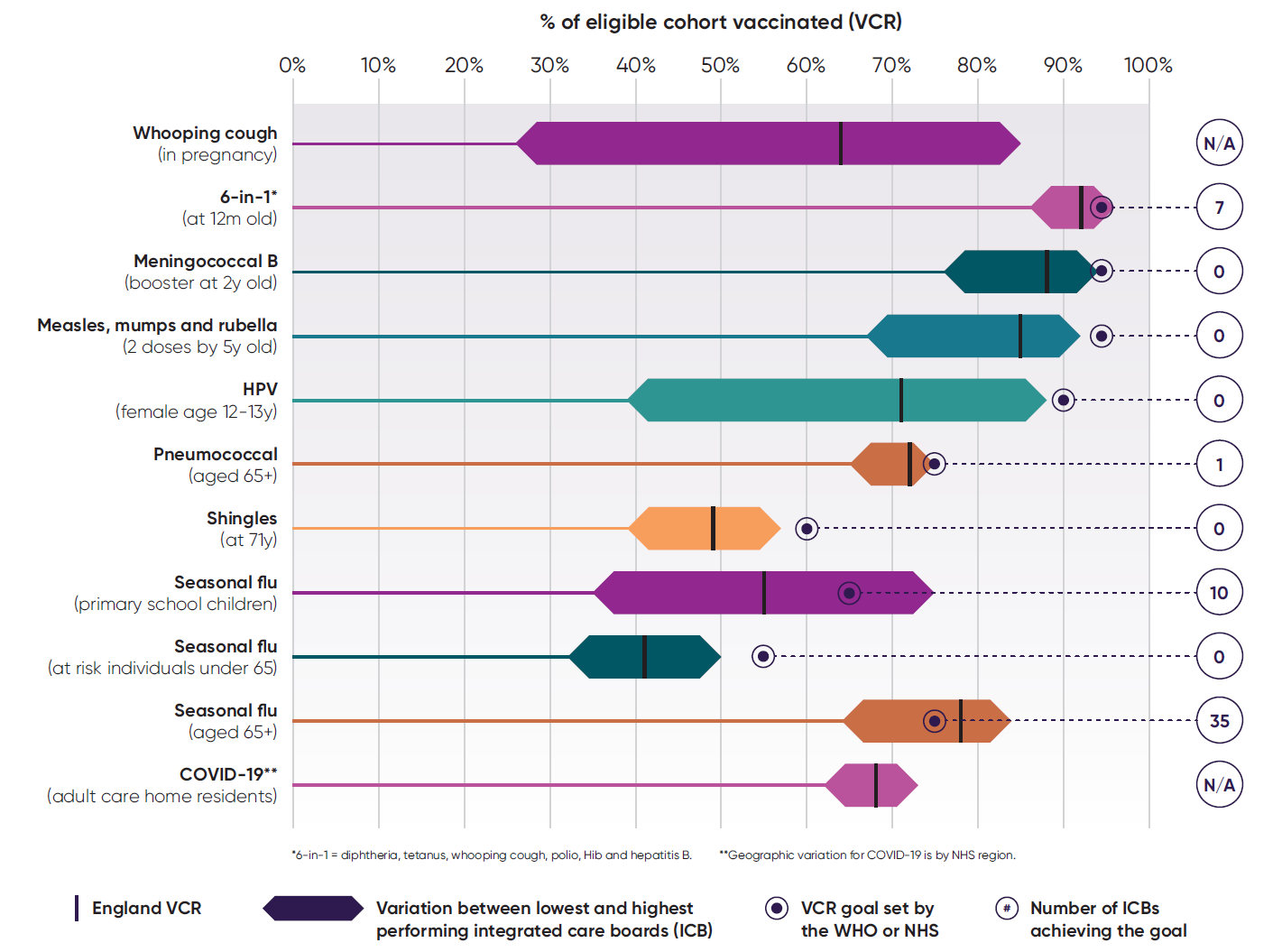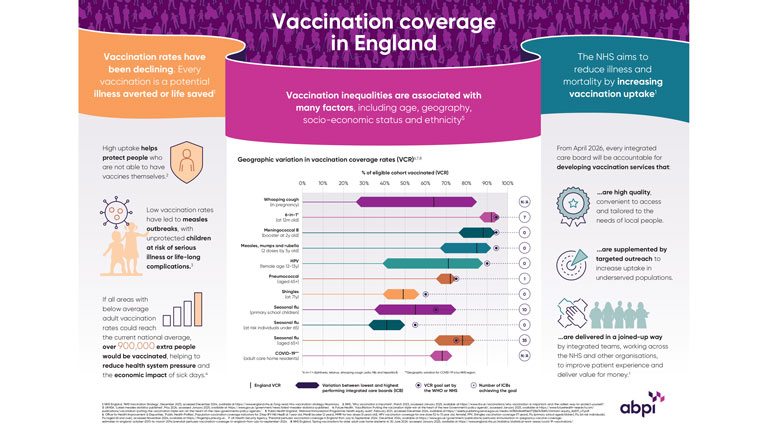Vaccination rates

High uptake helps protect people who are too young or too ill to have vaccines themselves.1

Low vaccination rates have led to measles outbreaks, with unprotected children at risk of serious illness or life-long complications.3

If all areas with below average adult vaccination rates could reach the current national average, over 900,000, extra people would be vaccinated, helping to reduce health system pressure and the economic impact of sick days.4
Vaccination inequalities
Geographic variation in vaccination coverage rates (VCR)6,7,8

Vaccination uptake
 ... are high quality, convenient to access and tailored to the needs of local people.
... are high quality, convenient to access and tailored to the needs of local people.
 ... are supplemented by targeted outreach to increase uptake in underserved populations.
... are supplemented by targeted outreach to increase uptake in underserved populations.
 ... are delivered in a joined-up way by integrated teams, working across the NHS and other organisations, to improve patient experience and deliver value for money.1
... are delivered in a joined-up way by integrated teams, working across the NHS and other organisations, to improve patient experience and deliver value for money.1
References
- NHS England, ‘NHS Vaccination Strategy’, December 2023, accessed December 2024, available at https://www.england.nhs.uk/long-read/nhs-vaccination-strategy/#summary.
- NHS, ‘Why vaccination is important’, March 2023, accessed January 2025, available at https://www.nhs.uk/vaccinations/why-vaccination-is-important-and-the-safest-way-to-protect-yourself/.
- UKHSA, ‘Latest measles statistics published’, May 2024, accessed January 2025, available at https://www.gov.uk/government/news/latest-measles-statistics-published.
- Future Health, ‘VacciNation: Putting the vaccination triple-win at the heart of the new Government’s policy agenda’, accessed January 2025, available at https://www.futurehealth-research.com/ publications/vaccination-putting-the-vaccination-triple-win-at-the-heart-of-the-new-governments-policy-agenda/.
- Public Health England, ‘National Immunisation Programme: health equity audit’, February 2021, accessed December 2024, available at https://assets.publishing.service.gov.uk/media/60183a8de90e07128e743b85/immnstn-equity_AUDIT_v11.pdf.
- O ce for Health Improvement & Disparities, ‘Public Health Profiles’, Population vaccination coverage indicators for: Dtap IPV Hib HepB at 1 year old, MenB booster (2 years), MMR for two doses (5 years old), HPV vaccination coverage for one dose (12 to 13 year old, female), PPV, Shingles vaccination coverage (71 years), Flu (primary school agedchildren), Flu (at risk individuals), Flu (aged 65 and over), accessed November 2024, available at https://fingertips.phe.org.uk.
- UK Health Security Agency, ‘Prenatal pertussis vaccination coverage in England from July to September 2024’, December 2024, available at https://www.gov.uk/government/publications/pertussis-immunisation-in-pregnancy-vaccine-coverageestimates- in-england-october-2013-to-march-2014/prenatal-pertussis-vaccination-coverage-in-england-from-july-to-september-2024.
- NHS England, ‘Spring vaccinations for older adult care home residents to 30 June 2024’ accessed January 2025, available at https://www.england.nhs.uk/statistics/statistical-work-areas/covid-19-vaccinations/.
-
PublisherABPI
-
Last modified14 February 2024
-
Last reviewed14 February 2024
